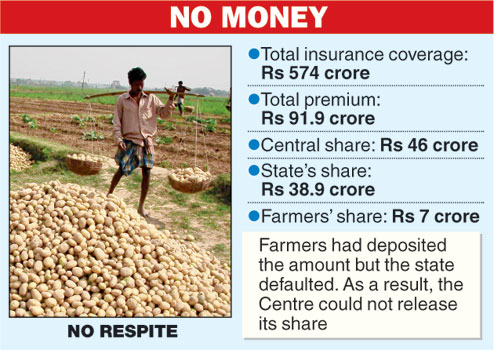Insurance: Big push to traditional products
Insurance is one of the most happening sectors today and on the threshold of rapid growth, thanks to a series of developments in the last two decades.
The growth of insurance during 1990s was rather slow. For instance, life insurance penetration was less than one per cent till 1990-91. It took about a decade to achieve a 100 basis points growth. In 2001, the penetration touched a little over two per cent.
A REVOLUTION
The credit for giving a big push to insurance goes to the liberalisation efforts in the early 1990s. The R.N. Malhotra Committee, set up in 1993, had recommended that the private sector (including foreign players) should be permitted to enter the insurance industry, besides formation of the Insurance Regulatory and Development Authority (IRDA).
Subsequently, the passage of the IRDA Bill and allowing private foreign players provided a boost for insurance in India and can truly be described as a revolution.
Within four years, foreign investments of Rs 870 crore flowed into the Indian market as 21 private companies were granted licences by the regulator.
Now, there are 52 insurance companies in operation of which 24 are in the life insurance business and 27 are non-life insurers.
The General Insurance Company is the sole National reinsurer.
The life insurance penetration shot up to 4.40 per cent in 2010 though it slipped to 3.40 per cent in 2011 due to regulatory over-haul and adverse impact of global economic environment.
The penetration of non-life insurance, however, remained study at 0.56 per cent.
KEY DRIVERS
There are a number of factors which drove the growth. The private insurers (with foreign players holding up to 26 per cent stake) have been aggressive with smart marketing and innovative products.
A substantial push has also come from successive budgets which have been giving tax-saving sops for insurance.
For most part of the last decade, insurance as a tax-saving device played a prominent role in a market where financial literacy has been low.
However, this has been changing of late with people increasingly seeing insurance as a social security necessity as well as investment especially in market-linked products.
GAME-CHANGERS
In the last five years, both life and non-life insurance sectors have again witnessed game-changing developments and regulatory interventions.
The robust growth of financial markets before the global economic meltdown of 2008-09 had lured insurance buyers to prefer Unit-Linked Insurance Plans (ULIPs).
The business mix tilted largely in favour of ULIPs with some private players selling up to 80 per cent of their policies in this segment.
This had an unexpected result a jurisdictional tussle between the Securities and Exchange Board of India and IRDA, with the former almost equating ULIPs with mutual funds.
The IRDA, however, prevailed over SEBI in what can be described as the biggest-ever tussle between financial regulators in the recent past.
FIRST YEAR PREMIUM
In 2010, the ULIP segment was humbled by the regulator which came up with significant changes in regulations by trimming the agent’s commissions and prescribing minimum surrender norms.
The ULIP Bubble busted, to borrow a term from the regulator, and the life insurance industry has been declining in terms of first year premium.
The first-year premium of life insurers in the first three quarters of the current financial year declined 12.6 per cent to Rs 69,184 crore compared with Rs 79,153 crore in the year-ago period, according to the IRDA data.
The guidelines for initial public offers of life insurers who completed 10 years of operation were another landmark.
The key-change in non-life segment was the dismantling of the motor third party pool due to mounting losses. This was possibly the biggest reform in the motor segment after de-tariffing. In its place, a declined pool came into operation from April 1 last year.
The formation of health insurance council and introduction of health insurance portability, definition of key terms spurned health insurance segment.
The non-life industry is now on a stable growth and consolidation is on the cards. The gross premium underwritten by non-life insurance companies grew by 19.7 per cent in the first three quarters of the current financial year compared with the year-ago period.
The gross premium collected by 26 non-life insurers during April-December 2012 increased to Rs 49,891 crore against Rs 41,887 crore in the corresponding period last year. From a customer point of view, the major relief was the integrated grievance management system and a call centre put in place by IRDA to monitor grievance redress on a real-time basis.
NEW FRONTIER
The insurance industry is set to explore new frontiers of growth in the days to come.
The regulatory over-haul of traditional life insurance products, increase of investment cap in a single company up to 15 per cent for insurers announced early this month are expected to drive the next phase of growth.
At a broader level, there could be some response to the IPOs though only about five players are eligible to public as of now.
The increase of upper cap on foreign direct investment from 26 per cent to 49 per cent, which is on the cards now, will bring in more structural changes and may also trigger consolidation.


Leave a Reply